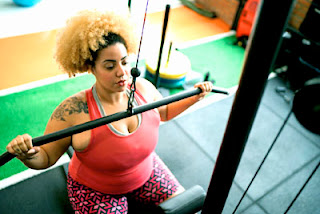These Are The Most Common Symptoms Of COVID-19 Today
The most common symptoms of COVID-19 appear to be milder than at the beginning of the pandemic. Thus, a COVID-19 infection can look like a cold, flu, or respiratory syncytial virus (RSV). This may be the reason why new types of coronavirus are still emerging and spreading.
According to recent data from the Centers for Disease Control and Prevention, XBB.1.5 is responsible for 40% of cases in the United States. According to NBC News, the other omicron subvariant is a descendant of the BA.2 strain, which he received in the spring. Experts worry that XBB.1.5 and its relative, XBB, may be better at evading antibody defenses against coronavirus infection than the current dominant BQ strain.
Two omicron subvariants—BQ.1 and BQ.1.1—currently account for more than 45% of COVID-19 cases in the United States.
Meanwhile, the previously dominant variant BA.5 now accounts for only 3.7% of cases in the country.
As this new strain continues to spread, the signs and symptoms of COVID-19 may be quite different from what we see in pandemics. This is the very thing you really want to be aware of how things have changed and how to remain protected as the infection spreads this colder time of year.
Common symptoms of COVID-19 currently include:
At the beginning of the pandemic, COVID-19 comes with a short list of typical symptoms, including fever, cough, shortness of breath, and loss of taste or smell. According to the CDC, there are several symptoms that can occur with a coronavirus infection, but the range of symptoms of COVID-19 has changed in the past few years, according to data from the ZOE Health Check that took place from December 13.
Smartphone data from the ZOE Health Study through December 13 shows the 10 most commonly reported symptoms of COVID-19 today:
* Sore throat * Runny nose * Stuffy nose * Sneezing * Non-wheezing cough (dry cough) * Headache * Wheezing cough (wet cough) * Hoarseness * Muscle aches and pains * Change in sense of smell.
Previously, ZOE Health Check regularly shared the five most common symptoms experienced by users. But we have seen this change frequently over time. So we are reporting the top 10 signs that remain more stable,- he said.
Experts generally believe that the symptoms of COVID-19 worsen over time, said Dr. Otto Yangang, professor of infectious diseases and microbiology, immunology, and molecular genetics at UCLA's David Geffen School of Medicine. TODAY.com in the past.
This may be because subvariants of the microbe stay longer in the upper respiratory tract,- Yang said, explaining that the virus doesn't affect the lungs as much as it normally does.
Being up-to-date with vaccines and boosters, or getting protection from previous infections, can make the symptoms of COVID-19 worse, Yangan said. Some have been vaccinated and now may have mild symptoms for which they will not be tested,- he said.
When should you test for COVID-19?
Since COVID-19 shares symptoms with many other diseases that are common at this time of year, you should not hesitate to get tested at home.
What people need to understand is that right now in flu season and RSV season - we still have COVID,- said Dr. Emily Wolk, president of the College of American Pathologists, previously told TODAY.com. So if you start experiencing any of the common symptoms like a cough, congestion, or sore throat, it's a good time to get a quick test, he said.
If you've been exposed to COVID-19, the CDC says you should be tested five days after exposure, even if you don't have symptoms at the time.
During the winter holiday season, you can use a rapid test for COVID-19 at home before gathering with friends and family to make your appointment safer - especially for people who are immunocompromised or have other risk factors that are more likely to get severe COVID-19. symptoms.
The CDC says it now applies to half of the country and is most useful for people in areas with moderate or high rates of COVID-19 transmission.
Through December 15, US families can take four free government-sponsored COVID-19 tests to help stop the spread of the virus. If you haven't, now is the time to back up.
How to treat symptoms of COVID-19 at home
According to the CDC, for most people, COVID-19 is a relatively mild illness that does not require special treatment.
While you're recovering at home, stay hydrated, get plenty of rest, and take over-the-counter medications (ibuprofen or acetaminophen), TODAY.com previously explained.
Some people may benefit from taking antiviral medication at home, such as Paxlovid, when they have an infection. This medication may be beneficial for people at risk of severe COVID-19 symptoms, including the elderly and people with certain health conditions.
The CDC advises that you should seek emergency medical attention if you develop more severe symptoms, such as trouble breathing or persistent pressure, or pain in your chest.
It's never too late to get vaccinated or up to date on your COVID-19 boosters. Protection from the COVID-19 vaccine - and now the updated micro booster shot - can prevent serious consequences of the virus, including hospitalization and death.





















